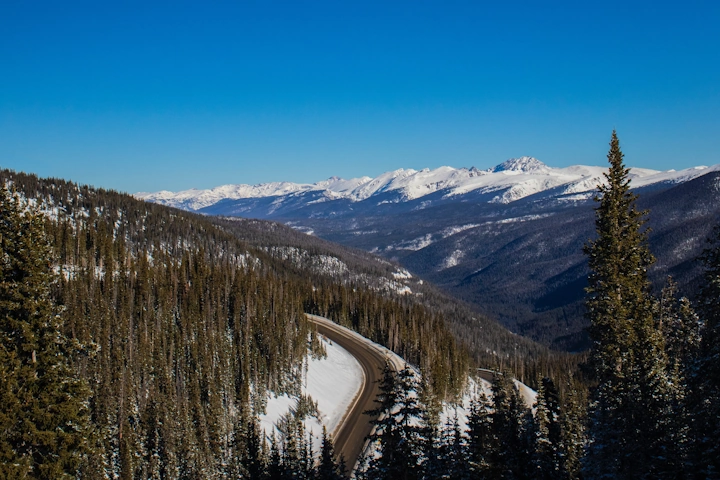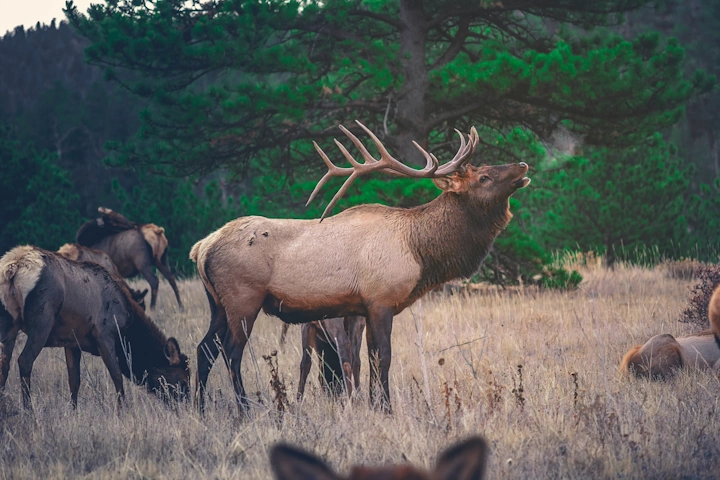Welcome to the awe-inspiring expanse of the Rocky Mountains, a haven where alpinists find their true calling amidst the rugged terrains and serene high-altitude meadows. Whether you are a seasoned mountaineer or a novice hiker, the Rockies have something unique to offer. In this guide, we will unearth the treasures hidden within this alpinist’s paradise, offering you a glimpse into the thrilling ascents, tranquil trails, and the camaraderie of the mountain community.
The Rocky Mountains stretch over a vast region across North America, showcasing a variety of majestic summits that beckon to the hearts of alpinists and mountain enthusiasts. The diversity in altitude, terrain, and difficulty levels make this mountain range an unparalleled choice for adventurers seeking to explore the highs and lows of the alpine world. In this section, we will delve into some of the notable peaks that define the Rockies, each with its unique allure and challenges.
Discovering the peaks
Majestic Summits
– Mount Elbert: The Tallest Peak
Standing tall at 14,439 feet, Mount Elbert is not only the highest peak in the Rocky Mountains but also the second highest in the contiguous United States. Located in Colorado’s San Isabel National Forest, this giant offers a variety of routes for ascents, ranging from the less challenging North Mount Elbert Trail to the more strenuous Box Creek Couloirs. The panoramic views from the summit are nothing short of breathtaking, offering a bird’s eye view of the expansive Rocky Mountain range.
– Pikes Peak: America’s Mountain
Pikes Peak, often dubbed as ‘America’s Mountain’, stands at 14,115 feet. It’s located west of Colorado Springs and is one of the most visited mountains in North America. The Barr Trail is the traditional route for hikers, which is a 13-mile one-way journey to the top. While the ascent is challenging, the panorama of the Colorado plains and the craggy mountainscape is a reward well worth the effort.
– Longs Peak: A Challenge for the Brave
Longs Peak towers at 14,259 feet, presenting a formidable challenge for even seasoned mountaineers. Situated within the Rocky Mountain National Park, it’s known for the iconic “Diamond,” a sheer cliff face that is a playground for technical climbers. The Keyhole Route is the standard path to the summit, demanding a blend of hiking, scrambling, and climbing through boulder fields and narrow ledges.

B. Hidden Gems
– Mount of the Holy Cross: A Spiritual Ascent
At 14,005 feet, Mount of the Holy Cross offers a spiritual journey for many who venture to its summit. Nestled within the White River National Forest, it’s named for the distinctive cross-shaped snowfield on its northeastern face. The standard North Ridge route is a fulfilling endeavor for those seeking a blend of spiritual and physical exploration.
– Mount Sneffels: A Scenic Splendor
With its summit at 14,150 feet, Mount Sneffels is often hailed as one of the most beautiful mountains in the Rockies. Located in the Uncompahgre National Forest, the ascent via the standard Yankee Boy Basin route presents hikers with a tapestry of wildflowers, alpine lakes, and stunning vistas.
Preparing for Your Adventure
Embarking on an adventure in the Rocky Mountains is not just a test of physical endurance, but also a journey of preparation and learning. Whether you are a beginner setting foot on the trails for the first time or an experienced alpinist aiming for the higher summits, preparing adequately will ensure a safe and enjoyable experience. In this section, we will discuss the essential gear you’ll need and where to acquire the skills necessary for your mountain adventure.
A. Essential Gear
– Clothing and Footwear
The right clothing and footwear are crucial for a comfortable and safe mountain expedition. It’s advisable to dress in layers to adapt to the fluctuating temperatures. Moisture-wicking base layers, insulating layers like fleece or down jackets, and waterproof outer layers are essential. Sturdy, waterproof hiking boots with good ankle support will keep your feet protected on rough terrains.
– Climbing Equipment
Depending on the level of your climb, different climbing equipment may be required. Basic gear includes a climbing helmet, harness, carabiners, ropes, and belay devices. For more technical ascents, you might need cams, nuts, and ice axes. It’s crucial to familiarize yourself with the gear and ensure it’s in good working condition before heading out.
– Navigation Tools
In the vast wilderness of the Rockies, having reliable navigation tools is vital. Maps, compasses, and GPS devices should be part of your kit. Additionally, knowing how to use these tools proficiently can be a lifesaver in tricky situations.
B. Acquiring the Skills
– Climbing Schools and Courses
The Rockies offer a plethora of climbing schools and courses that cater to all levels. Enrolling in a course will not only teach you the basics of climbing but also provide insights into mountain safety, navigation, and wilderness survival. Look for schools with experienced instructors who have a thorough knowledge of the Rocky Mountains.
– Local Climbing Communities
Joining a local climbing community can be an invaluable resource. These communities provide a platform to meet seasoned climbers, share experiences, and even find climbing partners. They often organize group climbs, workshops, and other events that can provide practical experience and knowledge.
Embarking on an expedition in the Rocky Mountains is a pursuit that demands preparation, the right gear, and a set of skills. However, it’s not just about reaching the summit; it’s about the learning, the camaraderie, and the personal growth that comes with every step taken on the mountain trails. With the right preparation, every alpinist, whether novice or experienced, can embrace the challenges and joys that come with conquering the Rockies’ majestic peaks. Your journey in the mountains will be one filled with discoveries, not just about the alpine world, but also about your own capabilities. Preparing well is your first step towards a rewarding and memorable mountain adventure.
The trails less traveled
Venturing into the heart of the Rocky Mountains unveils a realm where every trail narrates a tale of the ancient earth, sky-piercing peaks, and the tranquil embrace of nature. The Rockies are home to an array of trails that cater to a spectrum of adventurers, from serene hikes to exhilarating off-the-beaten-path explorations. In this section, we will wander through some of the mesmerizing trails and hidden spots that promise a blend of serenity and adventure.
A. Scenic Hiking Routes
– The Maroon Bells Scenic Area
Often touted as the most photographed spot in Colorado, the Maroon Bells encapsulate the essence of alpine beauty. Trails here cater to all, from the leisurely Maroon Lake Scenic Trail to the more demanding Maroon-Snowmass Trail that delves deeper into the wilderness, offering a medley of alpine lakes, wildflower meadows, and robust mountain vistas.
– The Continental Divide Trail
A journey along the Continental Divide Trail is akin to traversing the spine of the continent. Stretching over 3,100 miles from Mexico to Canada, this trail offers an extensive exploration of the Rockies’ diverse landscapes. Sections of the trail like the Indian Peaks Wilderness in Colorado are particularly renowned for their breathtaking scenery and challenging terrains.

B. Off-the-Beaten Path
– Hidden Trails and Alpine Lakes
For those with a penchant for solitude and unspoiled nature, venturing off the beaten path is where the real adventure begins. Trails like the Blue Lakes Trail in Colorado’s Mt. Sneffels Wilderness lead to pristine alpine lakes nestled amidst towering peaks. Similarly, the less-trodden paths in the Weminuche Wilderness open up a realm of solitude and untouched beauty.
– Alpine Scrambles and Climbs
For the more adventurous souls, alpine scrambles like the one on Crestone Needle offer a thrilling blend of hiking and climbing. These routes demand a higher level of skill and preparation but reward with unparalleled alpine experiences and seldom-seen vistas.
The Rocky Mountains are a treasure trove of trails and natural wonders that beckon to the heart of every alpinist and hiker. Each trail is a passage to a different facet of the Rockies, be it the tranquil charm of alpine lakes, the rugged allure of towering peaks, or the profound silence of remote wilderness. Engaging with the Rockies through its trails is a journey of discovery, not merely of the external landscapes but also of the inner landscapes of endurance, courage, and awe. The trails are not just routes through the mountains; they are the narrative of the Rockies, waiting to be explored and experienced. Whether you choose the well-trodden paths or the secluded trails, each step is a dialogue with the heart of the Rockies, offering a deeper understanding of why this majestic mountain range is truly an alpinist’s paradise.
Safety in the High Country
Safety is a paramount concern when venturing into the high country of the Rocky Mountains. The unpredictable weather, the potential for wildlife encounters, and the rugged terrain demand a well-informed and prepared adventurer. In this section, we’ll delve into the critical aspects of safety that every alpinist and hiker should be cognizant of before embarking on their Rocky Mountain expedition.
A. Weather Precautions
– Understanding Mountain Weather
The weather in the Rocky Mountains can change rapidly, with sunny skies turning to storm clouds within moments. Acquainting yourself with mountain weather patterns, checking forecasts from reliable sources, and understanding the signs of changing weather are crucial for a safe adventure.
– Preparing for the Unexpected
Equipping yourself with the right gear to withstand unexpected weather changes is vital. Carry waterproof clothing, extra layers for warmth, and ensure you have adequate shelter options. It’s also wise to have a plan B, such as an alternative route or a nearby shelter, in case the weather turns foul.
B. Wildlife Encounters
– Respectful Observations
The Rockies are home to an abundance of wildlife including bears, moose, and mountain lions. Observing wildlife from a safe distance, using binoculars or a telephoto lens for a closer view, and respecting their space are the cornerstones of safe and respectful wildlife observation.
– Safety Measures
Carrying bear spray, making noise to alert animals to your presence, and understanding what to do in an encounter are crucial safety measures. It’s advisable to learn about the wildlife in the areas you’ll be exploring and to follow the guidelines provided by wildlife agencies.
C. Terrain Awareness
– Recognizing Hazardous Terrain
Being able to recognize and navigate through hazardous terrain such as loose rock, steep slopes, and icy patches is crucial. Acquaint yourself with the terrain types you will encounter and learn the skills necessary to traverse them safely.
– Route Finding
Effective route finding and navigation are skills that can prevent dangerous situations. Carrying and knowing how to use navigation tools, understanding topographic maps, and being able to identify landmarks are essential skills for safe mountain travel.
The beauty and solitude of the Rocky Mountains come with inherent risks that demand respect and preparation. A well-prepared alpinist is not only equipped to face the challenges of mountain terrain but also to act responsibly, ensuring their safety and that of others. The Rockies are a magnificent but wild terrain where the forces of nature reign. Embracing a culture of safety, respect for wildlife, and awareness of the rugged environment will enrich your experience, allowing you to delve into the adventure that the Rockies offer while ensuring a safe return to share the tales of your mountain escapades. Your journey in the Rockies is a testament to the primal allure of the mountains, and a respectful and prepared approach is your trusted companion on this adventurous trail.
Conclusion
The Rocky Mountains are more than just a range; they embody a way of life that resonates with every alpinist’s soul. As you prepare to embark on your journey through these ancient, majestic peaks, remember that the mountains are not just a destination, but a journey in itself. With the right preparation and a spirit of adventure, the Rockies will unveil a world of experiences waiting to be discovered. Your adventure in the Rockies is not just a chapter, but a continuing story in your alpinist journey.
